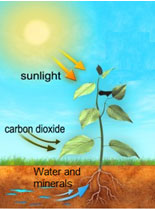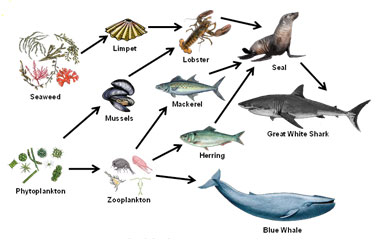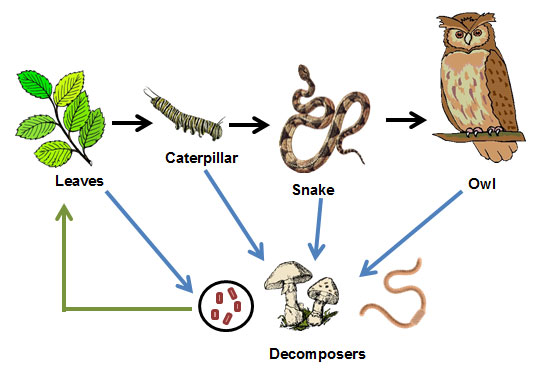
Source: Photosynthesis, Photosynthesis education

Source: Photosynthesis, Photosynthesis education
You have learned that radiant energy from the sun is transformed into chemical energy by plants during the process of photosynthesis. Photosynthesis is how energy enters the biotic (living) components of the biosphere. You also know that plants absorb water and nutrients through their roots, and carbon dioxide enters a plant through the stomata. This is how matter enters the living components of the biosphere.

Food chains and food webs illustrate how matter and energy flow through the living systems of the biosphere.
If matter and energy continuously cycle through the biotic (living) and abiotic (non-living) parts of the biosphere, how do matter and energy return to the abiotic components of the environment? When living things die, what happens to the energy trapped in the bodies of the organisms? When we throw things away, what happens to the energy trapped in the matter of those objects when they end up in a landfill?
Scavengers and decomposers are examples of ways matter and energy are returned to the abiotic components of the environment. Scavengers and decomposers can be considered the recyclers of an ecosystem.
![]() Click on each word below to learn more.
Click on each word below to learn more.
The image below shows a food web that includes decomposers.

![]() Watch the following video to learn more about decomposition.
Watch the following video to learn more about decomposition.
Source: Episode 4:Decomposers, Andrew Holzschuh, YouTube
During decomposition, bacteria and fungi recycle organic matter in an ecosystem by breaking down the dead plants and animals into nutrients.
Sources for images used in this section, as they appear, top to bottom: